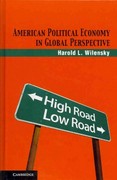1.1 Discuss four (4) factors that would cause a rightward shift of the supply curve. 1. Price of inputs (factors of production) 2. Prices of goods related in production 3. Technology 4. Expectations 5. Number of sellers or firms in the market More guidelines on four factors that would cause a rightward shift of the supply curve . Input prices Firms use a number of different inputs to produce any kind of good or service (i.e. output). When the prices of those inputs increase, the firms face higher production costs. As a result, producing said good or service becomes less profitable and firms will reduce supply. That is the supply curve shifts to the left (i.e. inward). By contrast, a decrease in input prices reduces production costs and therefore shifts the supply curve to the right (i.e. outward). Number of Sellers The number of sellers in a market has a significant impact on supply. When more firms enter a market to sell a specific good or service, supply increases. That is the supply curve shifts to the right. Meanwhile, when firms exit the market, supply decreases, i.e. the supply curve shifts to the left. This may seem pretty obvious, but nevertheless, it is an important factor to keep in mind. Technology The use of advanced technology in the production process increases productivity, which makes the production of goods or services more profitable. As a result, the supply curve shifts right, i.e. supply increases. Please note that technology in the context of the production process usually only causes an increase in supply, but not a decrease. The reason for this is simple: new technology is only adopted if it increases productivity. Otherwise, sellers can just stick with the technology they already have, which does not affect productivity (and thus supply). . Natural and Social Factors There are always a number of natural and social factors that affect supply. They can either affect how much output sellers can produce or how much they want to produce. Whenever one of those factors causes supply to decrease, the supply curve shifts to the left, whereas an increase in supply results in a shift to the right. As a rule of thumb, natural factors generally affect how much sellers can produce, while social factors have a greater effect on how much they want to produce. Expectations Last but not least, the seller's expectations of the future have a significant impact on supply. Or more specifically, their expectations of future prices and/or other factors that affect supply. If they expect prices to increase in the near future, they will hold some of their output back (i.e







